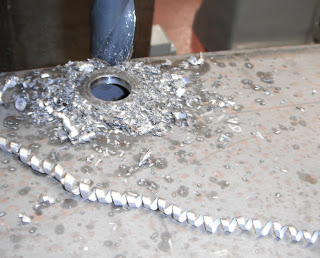are the new tractors as good as professional ones? Part of why the expensive ones cost so much is their long term life right?....will these last as long?Here is my answer: I can make a tractor that is categorically better than a professional one.
That tractor is called LifeTrac. Here is my reasoning...
This is a four minute TED Talk in which the founder discusses his experiences with 'industrial quality'.
For me, this resonates. My experience of commercial products from our economy is almost universally dismal. I'm not surprised to hear an experienced farmer say that modern tractors are fragile.
What does my tractor have to be to be better? It has to have a long life with generally low maintenance costs. It must be versatile enough to do the jobs I need to do. It must be affordable to produce and safe enough to operate.
Long Life: LifeTrac is built with very heavy duty materials. Commercial ventures skimp on materials because consumers don't generally differentiate between a product that lasts 20 years and one that lasts 50 years. I've had too many tools break because of this kind of skimping.
Maintenance Costs: LifeTrac will be maintainable for a couple of reasons. It's very modular so one broken part can often be replaced on the spot with a spare. The tractor keeps working while the broken module goes to the shop. Each module is inexpensive too. I expect to repair or replace any module on my tractor for $500 or less. I probably couldn't get a professional tractor to the shop for that much.
Versatility: LifeTrac uses the Bobcat standard for bucket attachments. Additionally, it has auxiliary hydraulic power connections which can be used to attach arbitrary machines. The power module on the LifeTrac can be removed and replaced with a more powerful one. It will be able to do any job an equivalent commercial tractor can do.
Building Cost: I expect my LifeTrac to cost around $10,000 to build. That is about a quarter the price of a commercial tractor. Factor-e-Farm is already selling them for a profit. I don't know how many hours of labor it will take to build. I've already put a lot of time into the project and there is a long way to go. I'm tracking my time and money costs. I'll report on total costs when I'm done.
Safety: All heavy machinery is dangerous to operate. LifeTrac will be safe enough when operated carefully. It may be less safe than industry tractors-- I don't know enough about safety to judge.
The Long Run: Open Source projects improve and grow as they get more contributors. As more people build and use LifeTrac the failure modes, and inefficiencies will become apparent and the design will be improved. This will likely reduce cost, extend lifespan, add functionality, and improve safety.





























